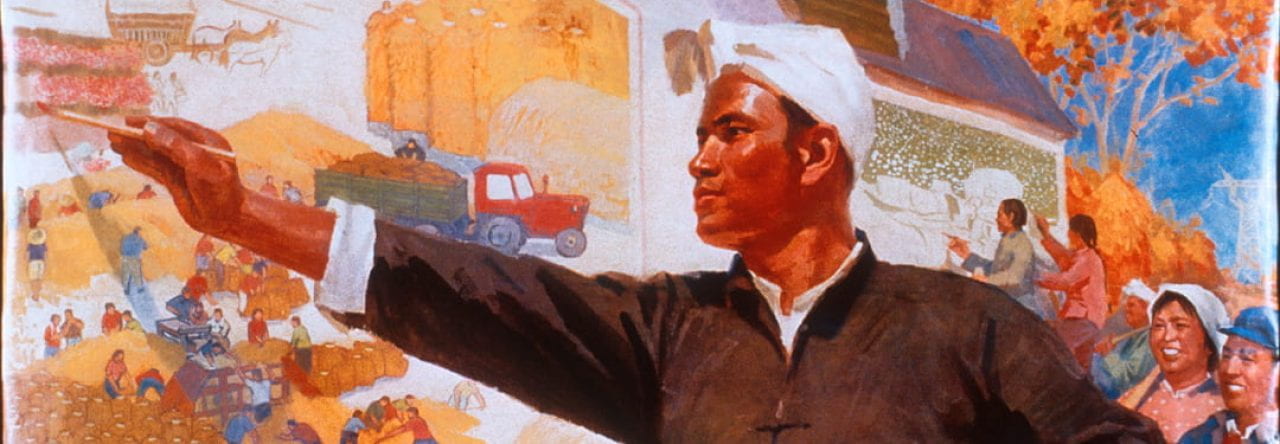
Sounds of the Mountain and Water, Li Keran, ink and color on paper (1970)
Li Keran (1907-1989), born in Xuzhou China, was a heavily noted Chinese artist of the 20th century and significant educator at the esteemed Central Academy of Fine Arts. Li began painting around 1934, and continued to develop his art career from there on out. Li was inspired by a professor while attending the Shanghai Art College, who’s works involved blending Western and Eastern art styles. Li was present when Mao Zedong established the People’s Republic of China in 1949, and also became a member of the Yiba Art Society, a leftist art organization. After the Sino-Japanese War (1937-1945), Li started to create works using an imaginative splash ink technique, while spending a lot of his time drawing from nature. In 20th century Chinese art, Li was said to be remembered as a pioneer through his ability to blend in stylistic Western elements, and through his idea that to conduct a reconstruction of Chinese painting would be from drawing.
Li’s works often illustrate the beauty of China’s landscapes, painting scenes of grand mountains, trees, waterfalls, etc. These works can be found in black in white or color, depending on what Li wants to portray. Landscape pieces including, and similar to Ten Thousand Crimson Hills will be included in this exhibition. In the exhibition, the idea of how Li was able to illustrate through his landscape paintings, the ideas of the Chinese Communist Party at the time, will be explored. What will also be explored is how Li’s personal beliefs were forced to be put in the dark in order to have his artworks fit in with society’s ideals. As mentioned earlier, Li was an important figure in the reconstruction of Chinese painting, so this theme is important as one can learn more about the impact and influence of Li, and artists similar to Li, as one of the things he was known for was mixing Chinese traditions with Western styles. Seeing how the Chinese government and society responded to Li’s adaptation of outside styles, will help shed light on the current ideals of the time, as well as the mindsets of the people, and what direction art was heading in 20th century China.
Bibliography
Andrews, Julia F. Painters and Politics in the People’s Republic of China, 1949-1979. University of California Press, 1995.
Andrews, Julia Frances, et al. Between the Thunder and the Rain: Chinese Paintings from the Opium War through the Cultural Revolution, 1840-1979. Echo Rock Ventures, in Association with the Asian Art Museum–Chong-Moon Lee Center for Asian Art and Culture, 2000.
Hawks, Shelley Drake. The Art of Resistance: Painting by Candlelight in Mao’s China. University of Washington Press, 2017.
Xie, Mian, and Charlie Ng. The Ideological Transformation of 20th Century Chinese Literature. Silkroad Press, 2016.



